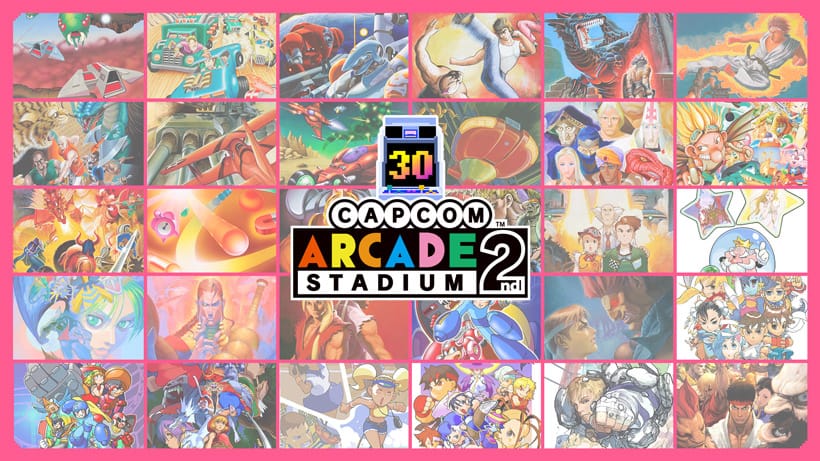
After Capcom released Capcom Arcade Stadium, a collection of 30+ games from Capcom’s arcade library, fans wanted more. Capcom has thus released a second collection of classic arcade games and we will go through them all once again.
In order to make this review easier, I have once again broken everything into sections, but this time I will follow a different approach than before to categorizing games. For instance, one game is labelled as a shooter when it really is not and I have separated the brawlers from the rest of the action games, but otherwise, I will mostly just stick to Capcom’s categories. Like last time, I will bring up the instances of Bionic Commando syndrome, or cases where a console version was far superior to the arcade release, but there are much fewer instances of that occurring here.
Initial impressions
Capcom Arcade 2nd Stadium has a wide variety of display options for the games. You can choose to have the game be played in a virtual cabinet to replicate the arcades for instance, and there are a variety of ways to have the game appear, including multiple filters, display and sizing options. The games have information on the controls and gameplay as well, so there is enough information to help you understand how to play, and rewind options and speed options are included here. Games can be rewound at the touch of a button, and there are multiple speeds you can choose from so the game will be as fast as you want or slowed down to help you out. The rewind feature and speed options are a great touch and when combined with he ability to choose difficulty levels, really do a great job of making the games more accessible.
Brawlers
Avengers/ Hissatsu Buraiken 1987
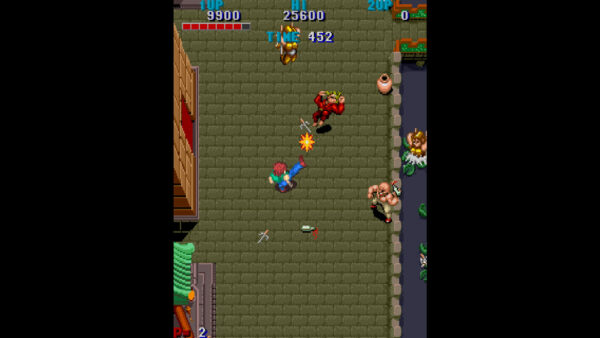
Hissatsu Buraiken, also known as Avengers in the west is a top-down beat ’em up and possibly the first ever top-down beat ’em up game. That does not make it a great game though, as the game still suffers from many of the issues that early beat ’em ups had. The perspective also sometimes gets in the way, but do not write this one off so quickly. Capcom tried something very different here and this was an important game as it led to later titles such as SNK’s Ikari Warriors 3, which improved on this style and led to more top-down brawlers.
The King of Dragons 1991
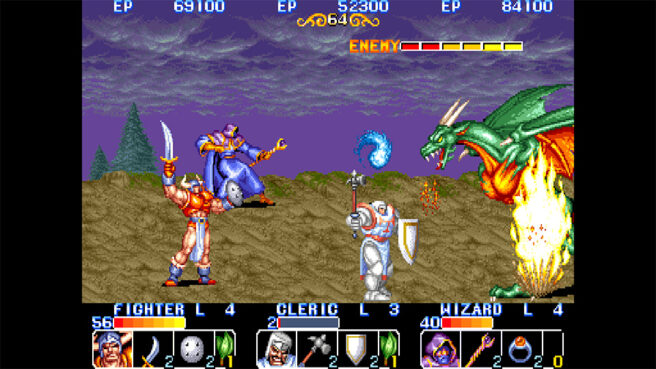
The King of Dragons was the clear forerunner to Capcom’s D&D arcade brawlers. While basic when compared to those games, King of the Dragons managed to have an epic fantasy feel to it while bringing in neat RPG elements such as levelling up your characters and obtaining new weapons and one-use spells. The game also had a nice way of offering you the chance to switch your character after a level and excellent co-op modes that were sadly reduced in the SNES port. It is one that is worth giving a playthrough indeed.
Knights of the Round 1991
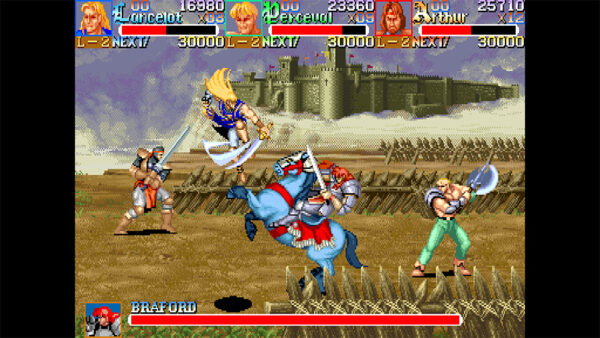
The most well-known Beat Em Up game of the three included here, this one certainly lives up to its reputation as a great game. This is basically Capcom’s answer to Golden Axe, but set in the Arthurian legends instead. RPG elements such as levelling up are kept here, and you can see visual evidence in your character as it happens. The game gave numerous shakeups to how it was played, such as bringing in horses at times like Warriors of Fate did, but here it was just for a short period. It is fun, for sure and would have been nice to see more of it.
Fighting Games
Street Fighter 1987
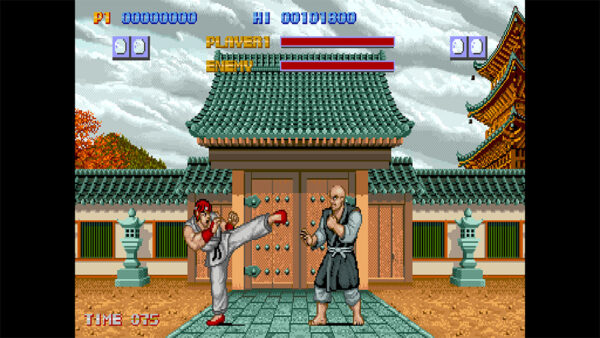
Street Fighter is just a terrible game and should really only be played to see where the series originated. There have been fan attempts to make it better, but really this is an arcade game that is more of a curiosity than anything else and honestly gets in its own way.
Saturday Night Slam Masters 1992
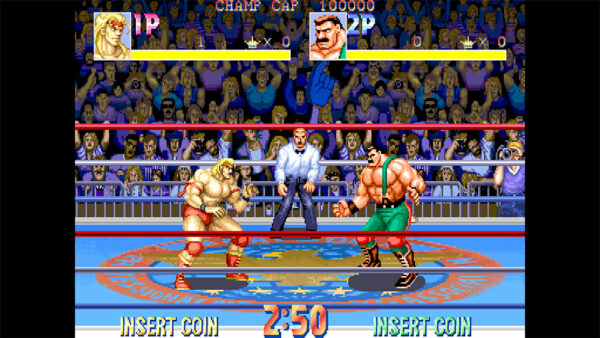
Saturday Night Slam Masters was a unique experience in that it combined the experience of the squared circle with the style of Capcom’s traditional fighting games. It was an experience in the arcade that was unmatched with only Wrestlefest and Midway’s WrestleMania Arcade coming anywhere near it. You had characters both original and pre-existing such as Mike Haggar, which was actually the first time Mayor Mike was in a fighting game and not just a beat ’em up, and characters with ties to the Street Fighter franchise as well. The action was intense and fast-paced and playing with several people was a blast and it was here that Capcom did things they had not done before with their fighting games. These new ideas directly led to later fighting games such as Power Stone and other beloved fighting gems. While not a total example of Bionic Commando syndrome, both the SNES and Genesis/Mega Drive versions did add some new content even if they lacked aspects of the arcade version.
Darkstalkers 1994 1995 1997
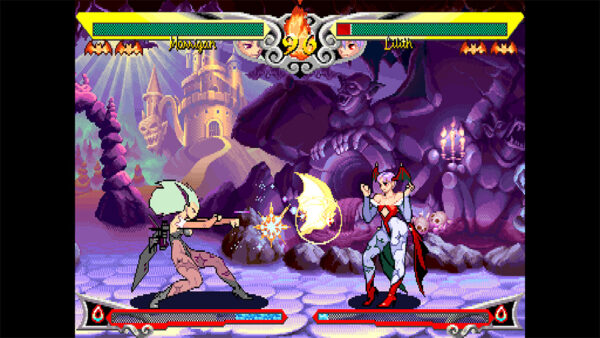
This series of monster-themed fighters have always had a devoted hardcore fanbase who have been clamouring for new entries. The Darkstalkers games are home to fast-paced combat and beloved characters such as the succubus Morrigan, the cat girl Felicia, the Chinese vampire Hsien Ko and of course the werewolf Talbain. The games show a clear evolution from game to game to the point where Vampire Savior disposed of the two-round system in favour of a double health bar and more speed. These are combo-heavy games with absolutely gorgeous artwork, animation and music, and stand out still as a fighting game fan’s ideal series.
Super Gem Fighters Mega Mix 1997
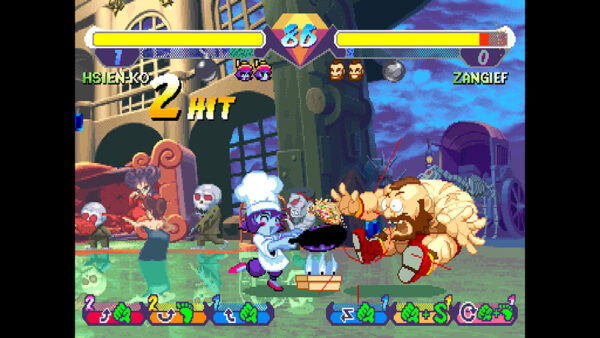
.This is a comedic fighting game which makes use of gems that can be found throughout the matches to power up characters, akin to Red Earth/War-Zard, while also taking concepts from Darkstalkers in the form of elemental hits. The characters come from both the Street Fighter and Darkstalkers series, and also an appearance from Tessa from Red Earth/War-Zard, giving that game more attention. Super Gem Fighter Mini Mix is incredibly easy to learn and fun to get into. Characters will reference other Capcom series, such as Felicia briefly taking on the appearance of Mega Man for instance, and Chun Li into Jill Valentine. What makes this game so accessible is its unique control scheme which used dedicated special buttons for instance, and yet still provided depth to players who put in the effort to excel at the game.
Street Fighter Alpha series
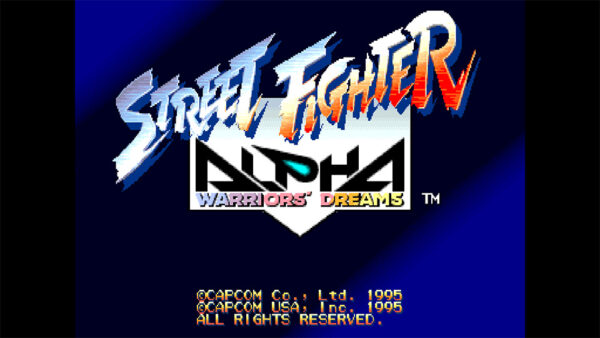
Street Fighter Alpha 1 2 and 3 are here and they shine as bright as ever. These obviously do not include many of the enhanced console versions as seen on the Saturn and the Dreamcast, but the core experience is here for those who want to try them. These prequels to the Street Fighter II series bring many new characters, mechanics and story elements that would strongly impact later games in the franchise, and would help solidify the shared universe status of Street Fighter and Final Fight by bringing in characters from the latter series.
Hyper Street Fighter II 2004
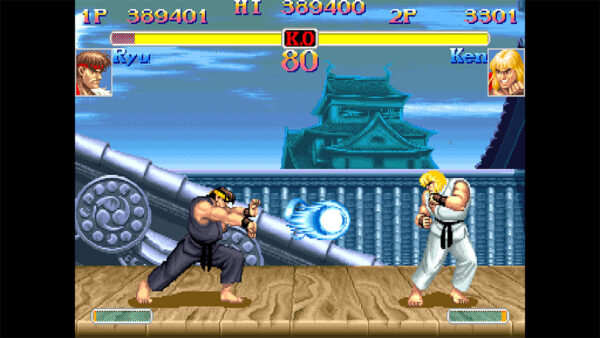
Hyper Street Fighter II collects every single playable character from the five full arcade versions of Street Fighter II, and also adds selection menus for the speed of the game and what style of game you want to play. This is essentially a Steet Fighter II collection in its own right, while at the same time being a best-of version. This is Street Fighter II at its arcade best and allows you to essentially switch between styles to determine the way your chosen character works, from the moves to animation and voice acting, which means while there are 17 unique characters, you will in fact have 65-character variations in all.
Puzzle
Block Block 1991
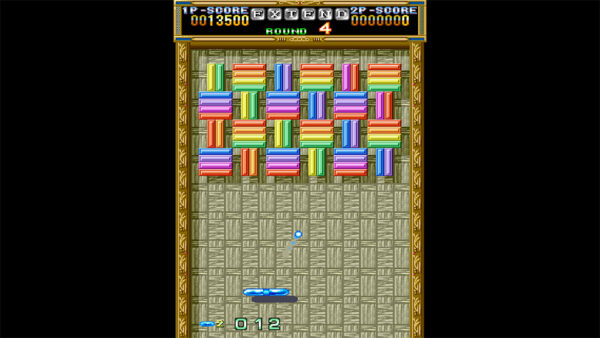
Block Block is Breakout….and that is really all there is to it. There really is not much to say other than Capcom made a Breakout/Arkanoid-inspired game in 1991, and sadly it comes across as the poor man’s version of much better games. You can still have fun with it, but do not expect anything mindblowing.
Pnickies 1994
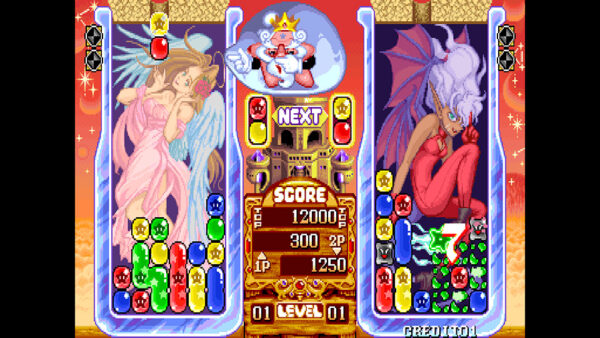
Like Block Block, Pnickies comes across initially as a poor man’s version of another puzzle game, in this case, the Puyo Puyo series. There is more to the game than appears though as this was also developed by Compile, making this less of a rip-off. The goal is to get jellies to fuse and then detonate them using stars, and while it does not reach the heights of its inspiration, it does manage to be fun where Block Block isn’t. This is a game that understood what it was and tried to add its own twist on the gameplay. This is a game that would have been helped by online play, as the competitive puzzle scene would do wonders with this title.
Super Puzzle Fighter II Turbo 1996
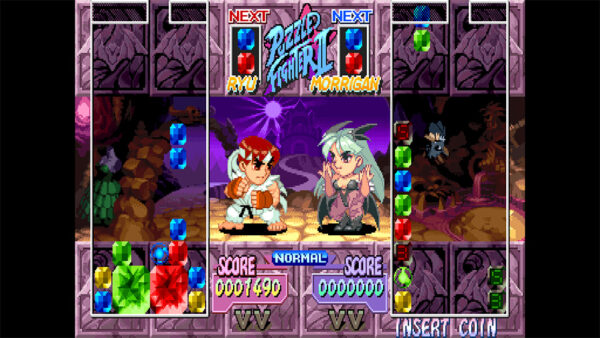
Super Puzzle Fighter II Turbo, is a neat little spinoff of Super Gem Fighters Mega Mix. This is a tile-matching game where pulling off combos will result in your character performing attacks on your opponent. This is a very competitive puzzle game against either the computer or an opponent. Strategy is key here, and some exploits exist that are great to find out about and learn how to use. This is a game that you learn by playing and it is extremely satisfying.
Shoot em Up
Gun.Smoke 1985
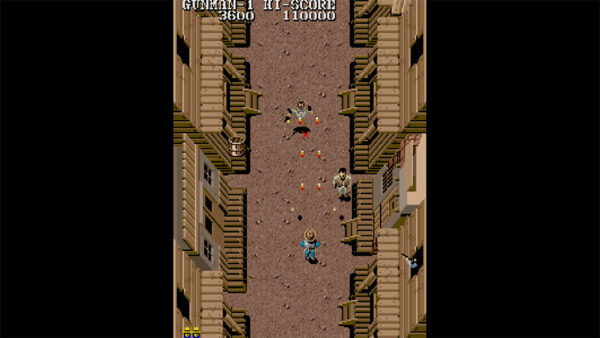
Gun.Smoke is a vertical scrolling wild west shoot em up with a unique control scheme, Pressing the different buttons will shoot in different directions, such as straight ahead, left, right or both directions diagonally. That said, you can combine different ways your gunman can shoot through multiple buttons prompts. There are special items to collect, such as a horse that gives you three hits before going away, boots that speed you up and better bullets and guns. This would be a fun game, but the controls can be a little frustrating and it is very easy to die, especially from the numerous obstacles in the way that can get you before an enemy does.
Gun.Smoke is one of three examples of Bionic Commando Syndrome in this collection, as its NES port vastly changed things for the better. The controls got reworked, there was an actual storyline to follow, and many new gameplay elements were introduced. For instance, while you now had to find a wanted poster in each level, you could also buy weapons and even the wanted poster from other characters and your score was used as currency, thus making it useful to the game even outside of the arcade.
Savage Bees 1985
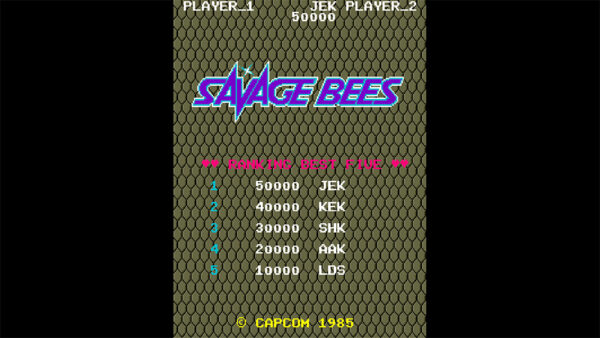
Savage Bees is a shmup that shows its age when you play it. Much like Vulgas. it was a game that was fine in its time, but there is sadly nothing to keep you playing now. In fact, it actually feels like it has less to offer than Vulgas, and feels far more derivative of other shmups on the market at the time. A game best skipped
The Speed Rumbler, 1986
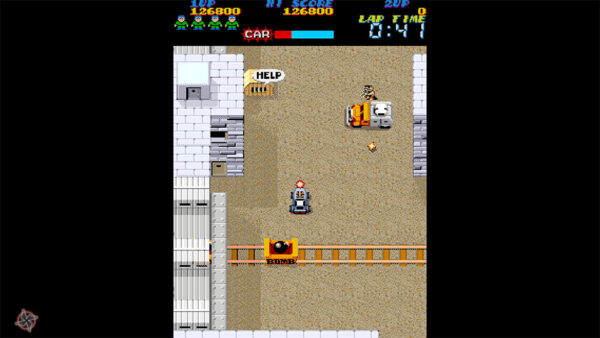
The Speed Rumbler is a shmup but far from a traditional one, and here we can see Capcom trying to branch out and do some new things. The Speed Rumbler is part shmup and part demolition derby driver and sees you take control of a police officer chasing down crooks. You will need to shoot at and then arrest them or take them out. As many of the crooks are in other vehicles, you will need to go after the cars first and this brings in the demolition derby aspect of the game. Sadly, the game just feels a bit too basic and controls awkwardly but it is clear that there was potential here, but the technology was just not where it needed to be yet.
Hyper Dyne Side Arms 1986
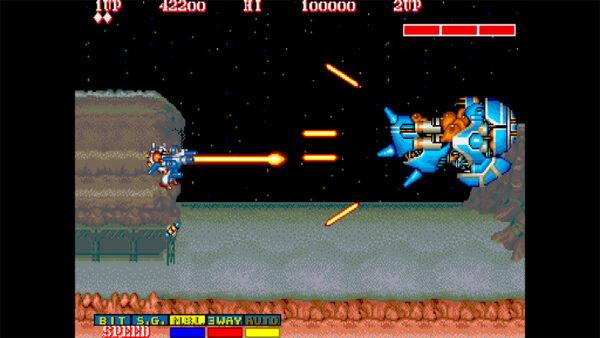
Hyper Dyne Side Arms is a horizontal scrolling shooter that takes cues from Capcom’s previous game Section Z. The game uses an eight-way control to move the character with two buttons to shoot, one will turn you to the left and the other to the right much like the previously mentioned game. A third button will change between the various weapons you pick up and there are upgrades that appear such as a shogun, three-way shooter and a laser beam that can be obtained by shooting a power-up icon until it gives you the weapon you want, and all weapons and the mechs speed can be upgraded two to three times.
It is a fun shmup, even if it feels a bit unpolished at times but a warning must be given. The opening of the game is very intense and not safe for those with photosensitivity concerns. Hyper Dyne Side Arms is one other example of Bionic Commando syndrome in this collection, as it received not one, but two excellent ports to the PC Engine/Turbo Graphics that added new content. The first port lacked the two player mode but added in a sub-menu to change weapons, while the later CD port added a new mode with multiple gameplay changes.
1943 KAI 1988
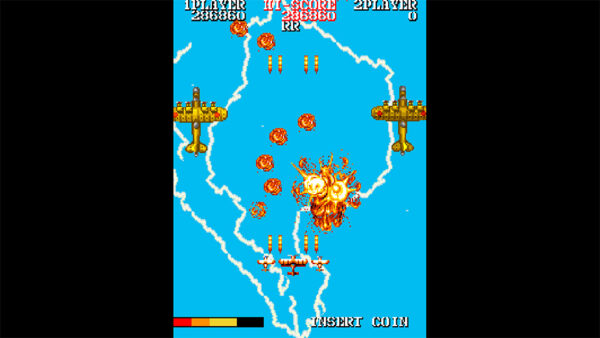
1943: The Battle of Midway was one of the better early shmups from Capcom and Capcom knew they had something special. 1943 Kai is a redone version of that game with some new visuals and gameplay that has been changed around. This new take on the classic is still a classic game, but a better version does exist on the PC Engine as the third example we have here of Bionic Commando syndrome, as the console version actually contains multiple additional levels and new music, much of which was truly original.
Last Duel 1988
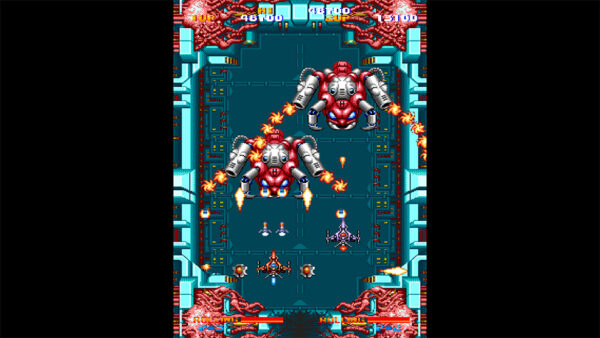
Last Duel is another different take on a shmup. This game sees you racing around a track while taking out enemies and dodging obstacles. Various parts of the track will spring traps such as holes in the ground and so you must jump over them. This takes a bit of time to get used to actually, but once you get the hang of it and the controls, Last Duel is actually rather fun to play.
Eco Fighters 1994
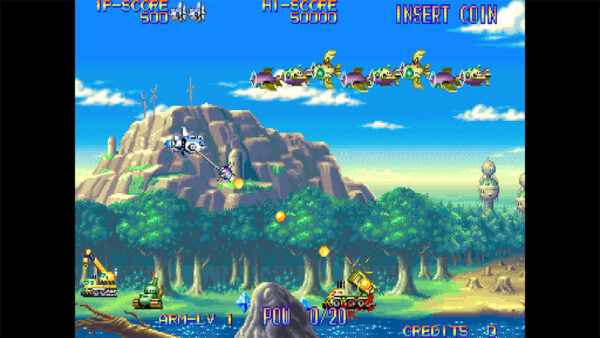
Eco Fighters is a rather interesting shmup, and has a strong environmental message to it. The game has beautiful visuals and like Forgotten World, you can use the shoulder buttons to rotate your shots, this time in a circular motion. You can charge up your attacks, while also getting new weapons and a wide variety of attacks to use.
Eco Fighters is extremely well designed and shows how much talent Capcom had when it came to shmups. This is a very inventive game with a great storyline to it and a distinct look that made it stand out. This is the standout shmup of the collection and an absolute must-play.
Action
Son Son 1984
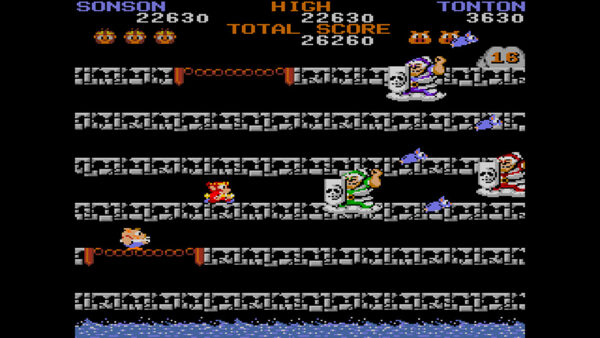
Though it is listed in the collection as a shmup, Son Son is more of a side-scrolling action game in the vein of the later released Jaleco game City Connection. The game is actually inspired by the classic Chinese novel Journey To The West, and the character of Sun Wukong, (Son Goku in Japan), and features the monkey price in a side-scrolling adventure. You must shoot at enemies approaching you while jumping to the correct row to grab fruits and other items. It is a decent one and minimal lag is here.
Tiger Road 1987
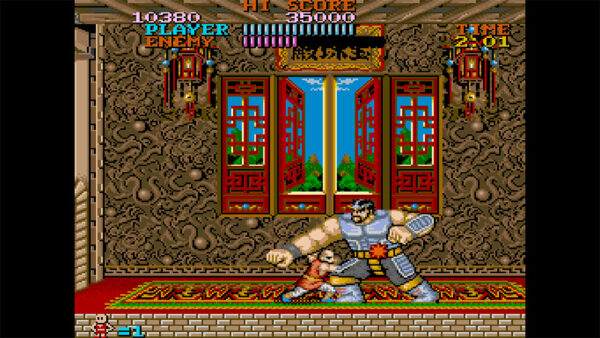
Tiger Road is an interesting side-scrolling hack n slash game that has a variety of options at the beginning. The goal is to defeat enemies and save children and calls to mind Trojan in many ways. The issue is that Tiger Road is just a bit lacking in terms of controls, and there is a bit of noticeable input lag when playing. Capcom tried something new with a game that had a bit of variety within each stage, such as areas where climbing staircases was needed, but the overall game is just kind of bland.
Black Tiger 1987
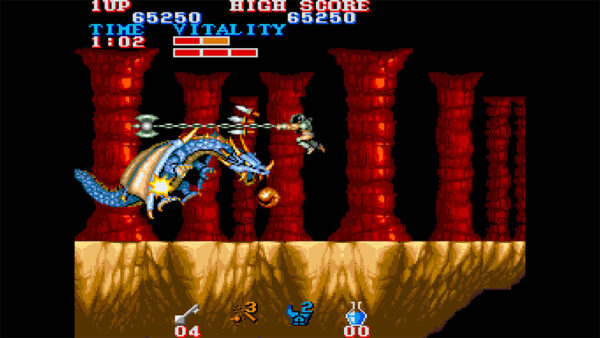
A side-scrolling hack ‘n slash game, Black Tiger took many cues from Ghosts ‘n Goblins but also brought many of its own ideas to the table. For instance, you can find wise men who will give rewards when rescued, such as advice and Zenny coins that will let you buy new items and upgrades to your weapons and armour. You can also purchase cures for poison, keys to treasure chests and more. There are also a variety of secrets to find, that as hidden coins, new weapon and armour upgrades, and extra lives. The Japanese version is also a lot more challenging than the American one and is an interesting comparison. In many ways, the game feels like the child of the aforementioned Ghosts ‘n Goblins and Bionic Commando, with its eight-way scrolling coming from the latter game. It is not bad, but Capcom would refine the ideas later on and create the much better game, Magic Sword.
Rally 20011 LED Storm 1989
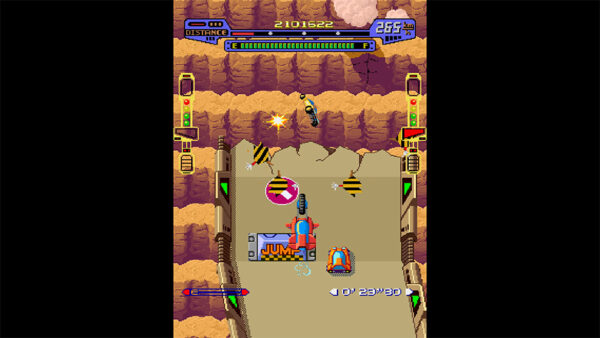
One of the more obscure Capcom games, Rally 2011 LED Storm is a futuristic top-down racing game and a very good one at that. You have complete control over the car across the many courses, and the speed and direction can be adjusted easily. Other cars will try and force you off the road, but you can easily do the same to them, giving the game a decent combat feel. There is also a neat transformation aspect to the vehicle that was lacking in the home console ports but said ports did feature additional characters. What is most interesting about Rally 2011 LED Storm is that the Japanese title of “Mad Gear” later inspired the gang in Final Fight, giving Rally 2011 LED Storm a strange but lasting legacy.
Magic Sword 1990
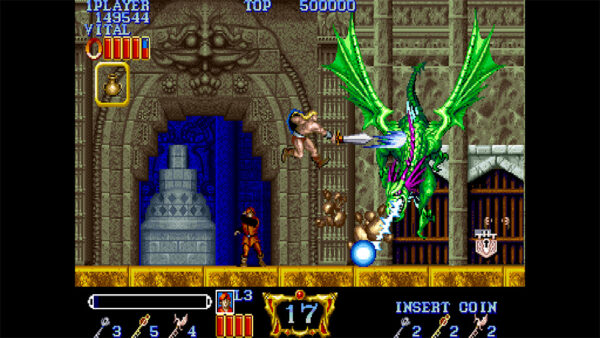
Magic Sword takes the ideas of Black Tiger and perfects them in every way. Now instead of finding wise men who give coins and advice, you can rescue numerous types of companions that will aid you on your journey. You must go floor by floor to navigate a labyrinth filled with enemies, and while providing a challenge, the challenge always feels fair. Finding keys is necessary to advance, as the many doors the keys unlock will yield new potential partners, leading to a choice of which companions fit you best, but some doors also lead to traps. With an excellent soundtrack and a wide assortment of enemies to fight, this is Capcom arcade action at its best. The SNES port was sadly lacking some of the arcade versions modes, and had lesser animations but did have new modes and level select options. This is a game that needs to be revived in some form.
Mega Man The Power Battle 1995
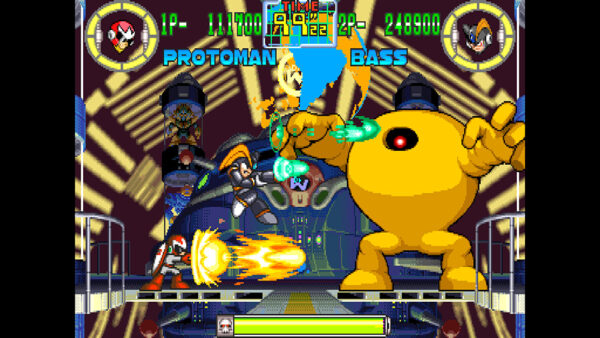
Mega Man the Power Battle is an interesting action arcade game ( author’s note, this was my first time playing the game and prior to this I had been under the mistaken impression that it was a fighting game). This can be best described as a boss rush boss fight game that is an amalgamation of different Mega Man games. You can select one of three characters, Mega Man, Proto Man or Bass and select one of three scenarios that present bosses from different games that can be selected roulette style. The boss fights work like the main games, with one boss’s weapon having a weakness or strength against another and thus having a rock paper scissors mechanics. It is an okay game but feels a bit bare bones in the finished product.
&
Mega Man 2: The Power Fighters 1996
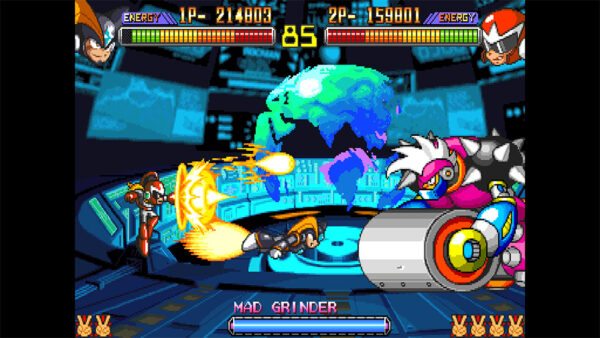
Mega Man 2: The Power Fighters follows up on the first game and adds a fourth playable character in Duo. This game builds on what came before and manages to create a much more satisfying experience, with the different scenarios selectable actually having a story component to them, and more traditional Mega Man elements making an appearance. Everything feels bigger and better here and even the endings, which were basic in the first game, actually do a bit to expand on the series lore here. Both games can be played with two players, but if you only want to try one of them, Mega Man 2: The Power Fighters is definitely the one to try as it is far more fun.
Capcom Sports Club 1997
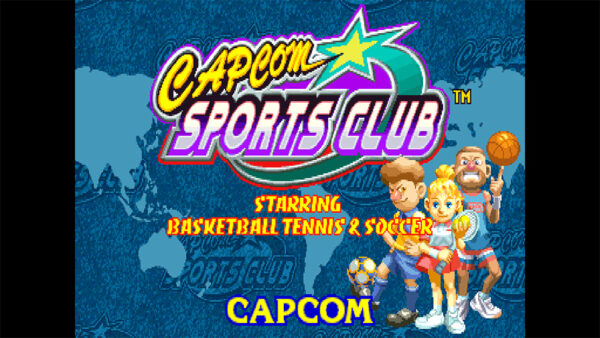
Capcom Sports Club is a great little experience that offers three games to play, Football/Soccer, Basketball, and Tennis and each is rendered with detailed and beautifully designed sprites and great arenas. If you like classic Mario Tennis games, the tennis mode will appeal to you, while the Basketball and Football/Soccer modes will call to mind some of the best of the classic sports games. How this game got so little attention is a mystery, because this is just awesome. This is a game that needs online play to really be appreciated though because the multiplayer fun to be had here will keep players coming back time and again due to its addictive nature.
Bonus Game
Three Wonders 1991
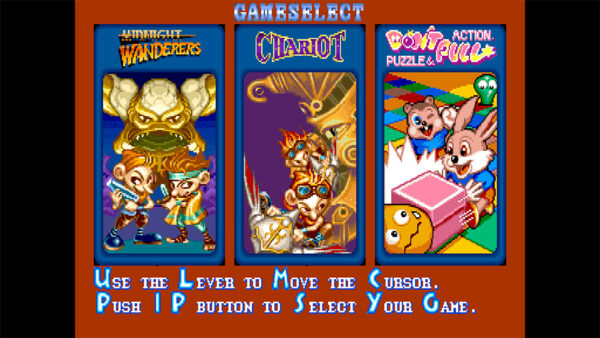
Three Wonders is a bonus game for this collection and itself is composed of three games. Midnight Wanderers: Quest for the Chariot, which is a run n gun platformer, Chariot: Adventure through the Sky, which is a scrolling shooter, and Don’t Pull, which is a puzzle video game. All three games are great and stand on their own, but Don’t Pull can take a bit of time to get into while the other two are easy to just pick up. Still, all three games are great and should be enjoyed.
Conclusion
Capcom Arcade 2nd Stadium is another great collection of classic games and has a number of features such as rotating the screen for TATE mode for those with that option on their TV or a Nintendo Switch FlipGrip. It is not all perfect though, as online gameplay would have been excellent to have in many of the games such as Capcom Sports Club and Saturday Night Slam Masters. Of course, there are even more games fans still want to see such as Mars Matrix (though there may actually be legal issues there), Strider 2, Dimahoo, and Ring of Destruction: Slam Masters II just to name a few, even if some omissions such as the licensed arcade games are more understandable.
One area that would be great to see as DLC would be if Capcom could add the console versions of the arcade games so fans could see the differences, and for the missing arcade games to be added as DLC. As for which games stood out as the best in each category, it would be Eco Fighters for Shoot ‘em Ups, Knights of the Round for Brawlers, Magic Sword for Action, Saturday Night Slam Masters for Fighting Games and Super Puzzle Fighter II Turbo for Puzzle Games. Still, this is a must-play collection for Capcom fans and retro game fans in general and makes so many games available on modern systems for the first time and opens them to a new audience, which is a great thing. Capcom did a great job with this second collection and the devotion to making the games accessible is something to be commended on. Hopefully this will not be the last time we see Capcom release its classic arcade games.
Available on Nintendo Switch, Xbox One, Xbox Series, PS4, PS5, and PC
Reviewed on Nintendo Switch
A review key was provided

